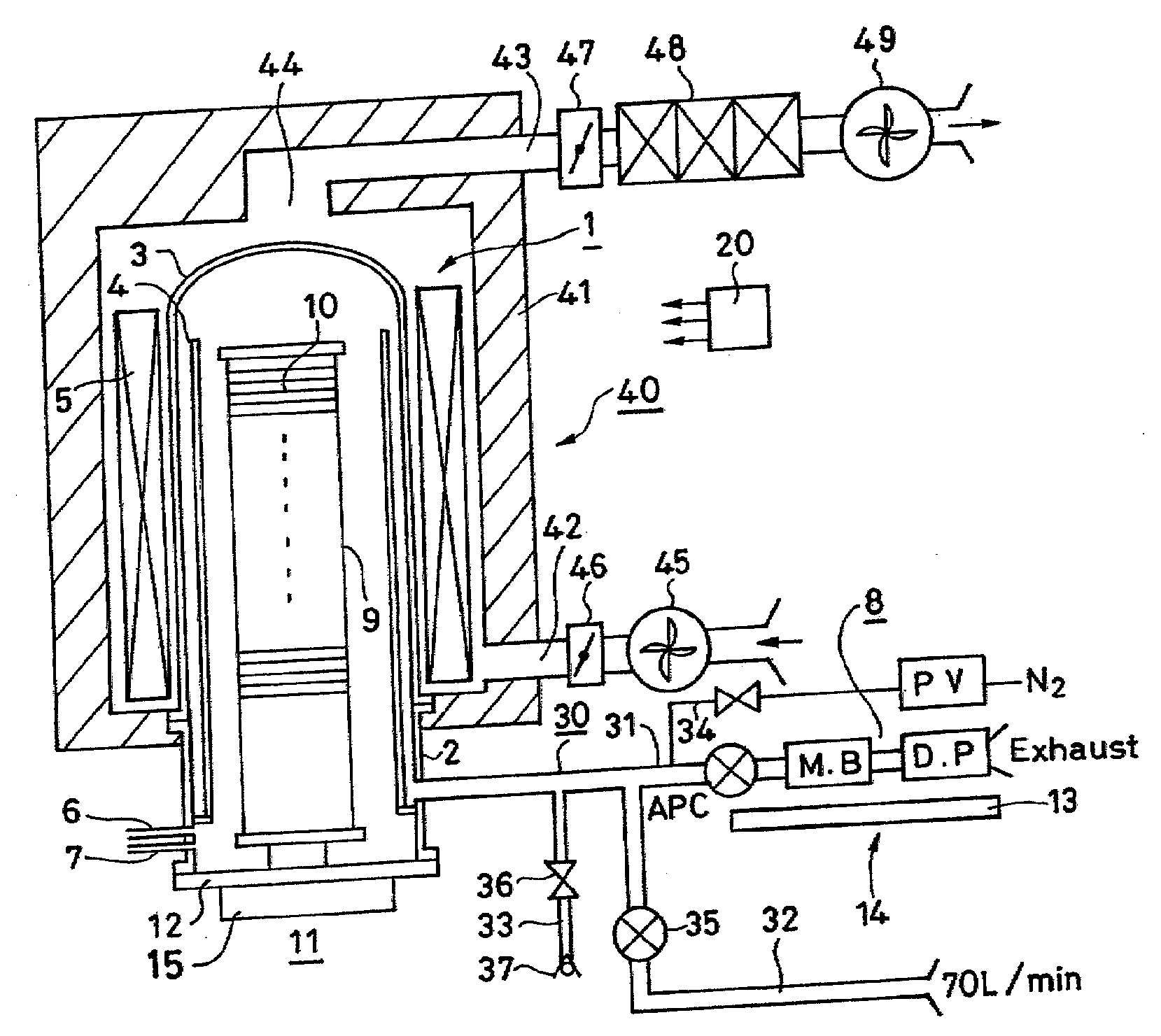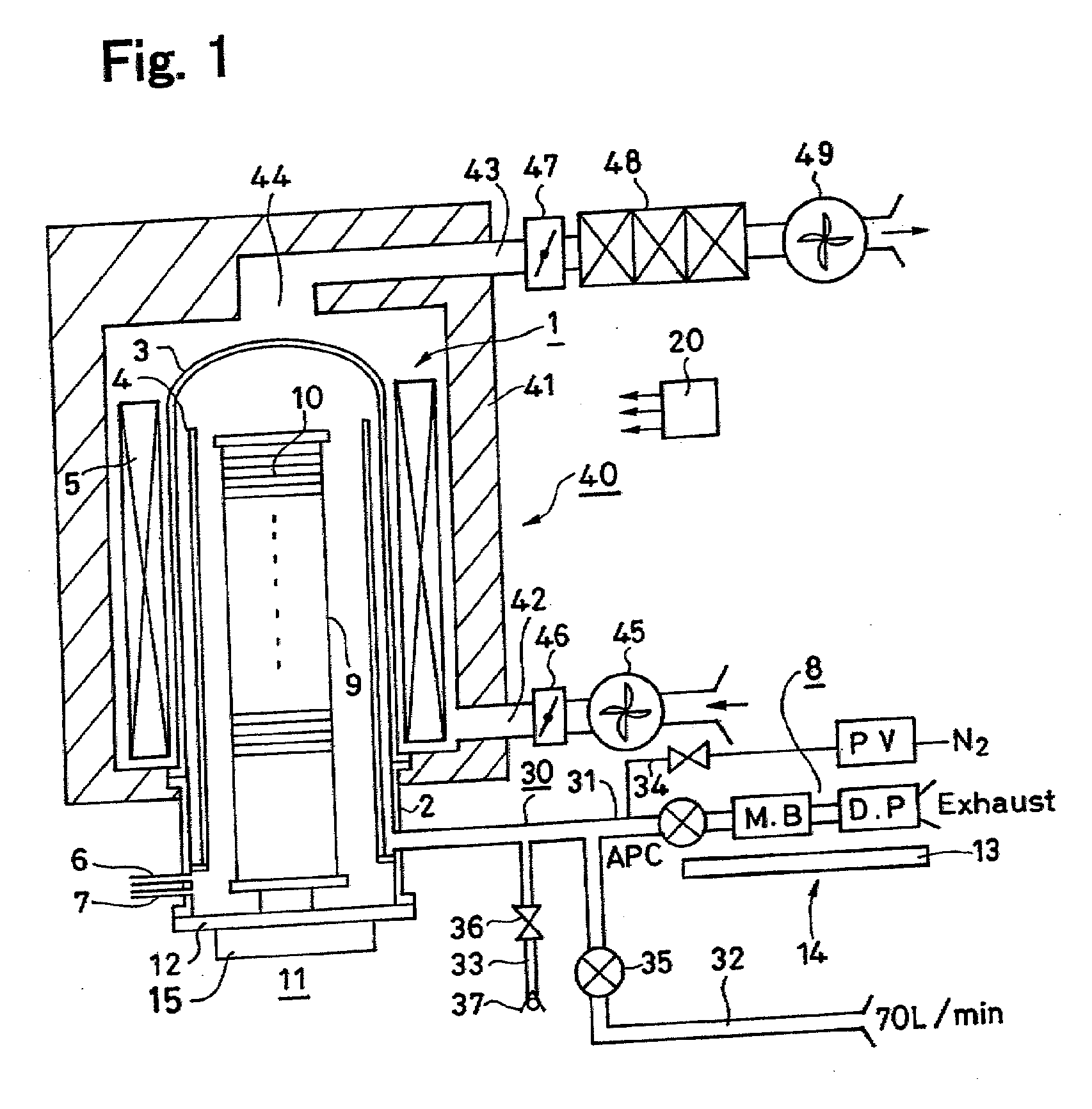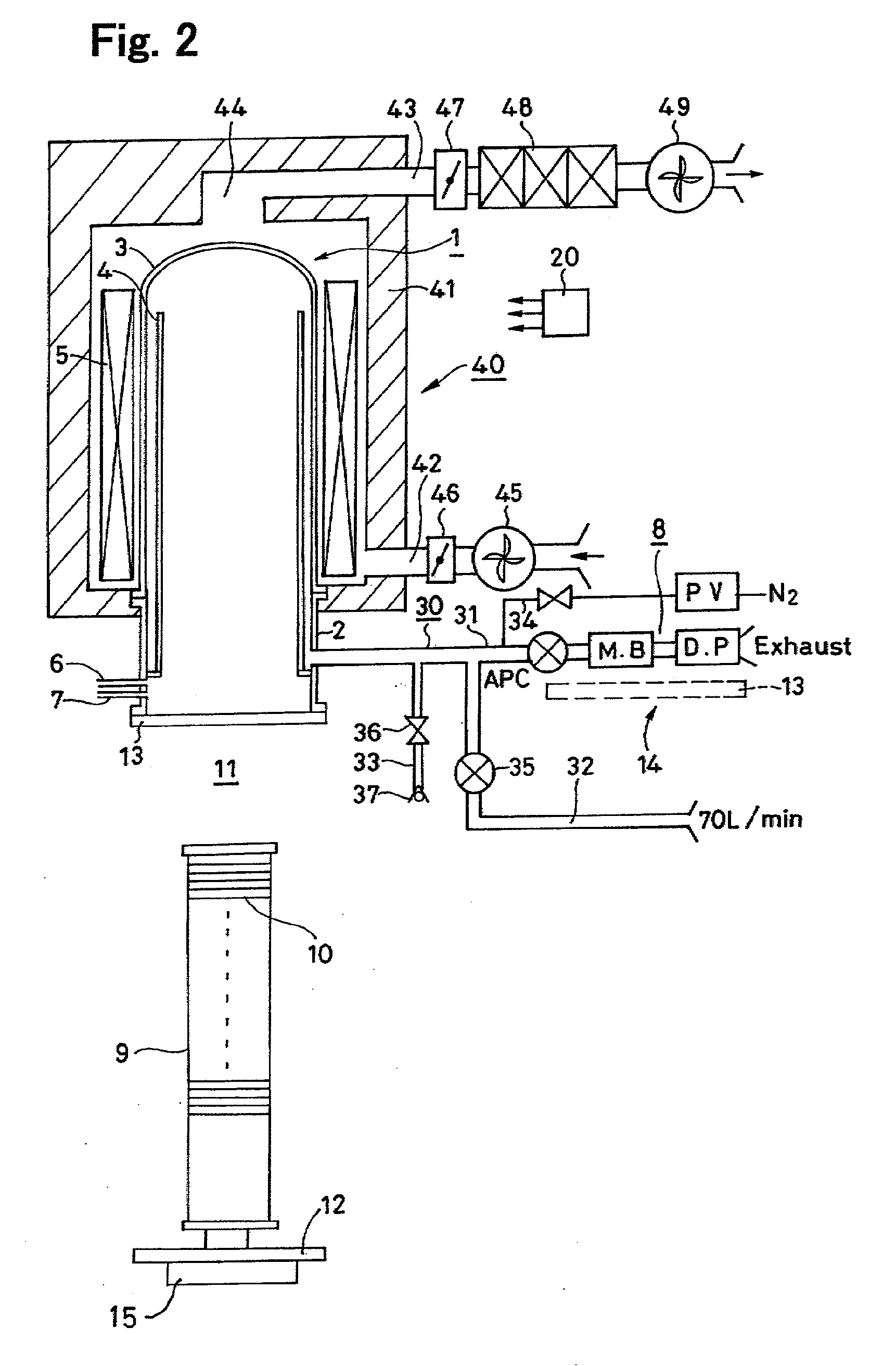Producing method of semiconductor device and substrate processing apparatus
a technology of substrate processing and semiconductor devices, which is applied in the direction of chemical vapor deposition coating, transportation and packaging, coatings, etc., can solve the problems of low mechanical disruptive strength of the deposited film, low particle discharging effect obtained by forcible generation of cracks in the deposited film, and low availability rate of the substrate processing apparatus (semiconductor producing apparatus), etc., to achieve the effect of reducing the particle discharging effect, reducing the production cost and reducing the productivity
- Summary
- Abstract
- Description
- Claims
- Application Information
AI Technical Summary
Benefits of technology
Problems solved by technology
Method used
Image
Examples
first example
[0082]Next, an experiment carried out for finding out a relation between a temperature lowering width in the LTP and generated particles will be explained below as a first example.
[0083]Using the wafer processing method in the above embodiment, SiN films, especially Si3N4 films whose film thickness of one film-formation was 1500 Å or higher were formed on silicon wafers of φ300 mm. DCS (SiH2Cl2) and NH3 were used as reaction gases and the film forming temperature was 730° C. to 800° C. The temperature lowering rate in the LTP was 20° C. / min. The processing was carried out while varying the temperature lowering width between three values, i.e., 300° C., 400° C. and 800° C., and the number of particles after the processing in each case was measured.
[0084]FIG. 4 shows a result of the measurement (relation between particles and the temperature lowering width in the LTP). A horizontal axis shows the temperature lowering width (° C.) in the LTP, and a vertical axis shows the number of par...
second example
[0085]Next, an experiment carried out for finding out a relation between a temperature lowering width in the LTP and generated particles will be explained below as a second example.
[0086]According to the wafer processing method of the above example, SiN films, especially Si3N4 films whose film thickness of one film-formation was 1500 Å or higher were formed on silicon wafers of φ300 mm. DCS (SiH2Cl2) and NH3 were used as reaction gases and the film forming temperature was 730° C. to 800° C. The temperature lowering width in the LTP was 400° C. The processing was carried out while varying the temperature lowering rate between three values, i.e., 0° C. / min, 4° C. / min and 20° C. / min, and the number of particles after the processing in each case was measured.
[0087]FIG. 5 shows a result of the measurement (relation between particles and the temperature lowering rate in the LTP). A horizontal axis shows the temperature lowering rate (° C. / min) in the LTP, and a vertical axis shows the num...
third example
[0088]Next, an experiment carried out for finding out a relation between particles and accumulated film thickness at the time of the LTP will be explained below as a third example.
[0089]According to the wafer processing method of the above example, SiN films, especially Si3N4 films whose film thickness of one film-formation was 1500 Å (150 nm) or higher were formed on silicon wafers of φ300 mm. DCS (SiH2Cl2) and NH3 were used as reaction gases and the film forming temperature was 730° C. to 800° C. The temperature lowering width in the LTP was 400° C., and the temperature lowering rate was 20° C. / min. Wafer cooling time was 15 minutes and wafer collecting time was 15 minutes. Therefore, the LTP was carried out simultaneously with these events within this total time (30 minutes) so that throughput is not lowered. In this example, the total time of the LTP was 30 minutes (temperature increasing time before the temperature is lowered was 10 minutes and the temperature lowering time was...
PUM
| Property | Measurement | Unit |
|---|---|---|
| Temperature | aaaaa | aaaaa |
Abstract
Description
Claims
Application Information
 Login to View More
Login to View More - R&D
- Intellectual Property
- Life Sciences
- Materials
- Tech Scout
- Unparalleled Data Quality
- Higher Quality Content
- 60% Fewer Hallucinations
Browse by: Latest US Patents, China's latest patents, Technical Efficacy Thesaurus, Application Domain, Technology Topic, Popular Technical Reports.
© 2025 PatSnap. All rights reserved.Legal|Privacy policy|Modern Slavery Act Transparency Statement|Sitemap|About US| Contact US: help@patsnap.com



